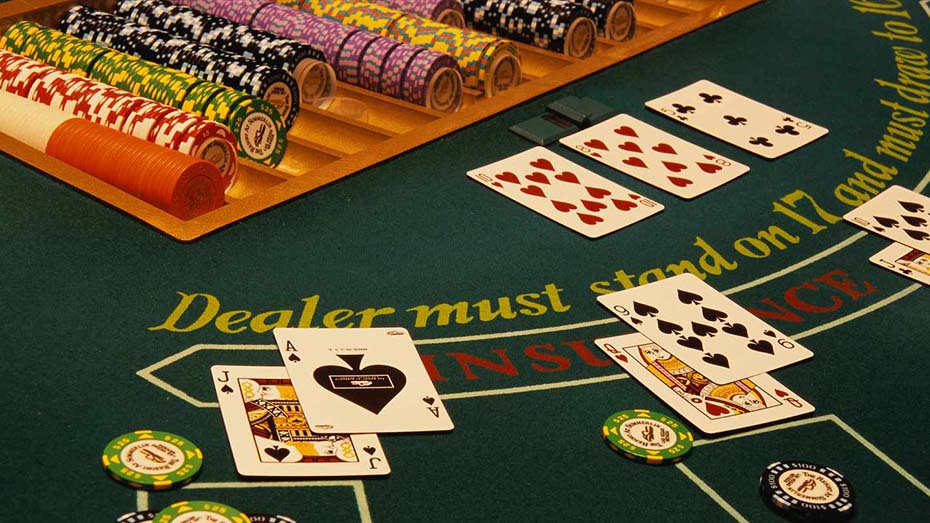Poker Hands Unleashed: The Ultimate Guide

Before embarking on your poker journey at Kinggame, it’s vital to grasp the poker hand hierarchy. This understanding will guide your decisions, ensuring correctness during gameplay. Familiarizing yourself with the value of diverse poker hands and the fundamentals of betting is pivotal. Armed with this knowledge, you’ll confidently navigate various poker variants.
If your goal is to excel in live casino offerings like Texas Hold’em or Omaha, acquainting yourself with the poker hand ranking system becomes paramount. This familiarity will boost your confidence when engaging in your favored poker variation, whether online or in a brick-and-mortar casino setting.
Poker Hands Explained: Understanding the Basics

A poker hand comprises a grouping of five playing cards that are combined to determine its rank. The ranking of these hands is determined by a combination of card values and suits, encompassing ten distinct categories ranging from the least valuable, High Card, to the most coveted, the Royal Flush.
Despite the existence of various poker variations, a common hierarchy for poker hands is followed in most of them. The strength of a hand is primarily based on its likelihood of being drawn, which means that hands with higher probabilities of occurrence are rated lower. These chances are commonly represented as the odds associated with poker hands.
In the realm of poker, individual cards have their own rankings, progressing from lowest to highest: 2, 3, 4, 5, 6, 7, 8, 9, 10, Jack, Queen, King, and the Ace. Notably, the Ace can also serve as a low card to form a straight sequence (e.g., A♥2♣3♣4♠5♦). In certain casual poker variants, “wild” cards are included in the deck, leading to the inclusion of the five of a kind hand in the list below.
Comprehending Poker Hand Rankings

In the realm of poker, the strength of a card combination hinges on poker hand rankings. These rankings span from the most feeble hand, the High Card, to the mightiest of them all, the Royal Flush. Below is the comprehensive list of poker hands, ordered from the most potent to the least:
| Rank | Name | Example | Frequency | Probability |
| 1 | Royal Flush | A♥ K♥ Q♥ J♥ 10♥ | 4 | 0.00% |
| 2 | Straight Flush | 7♠ 6♠ 5♠ 4♠ 3♠ | 36 | 0.00% |
| 3 | Four of a Kind | 10♠ A♦ A♠ A♥ A♣ | 624 | 0.02% |
| 4 | Full House | 9♣ 9♠ 9♥ J♥ J♠ | 3,744 | 0.14% |
| 5 | Flush | 2♣ 4♣ 7♣ 10♣ Q♣ | 5,108 | 0.20% |
| 6 | Straight | 5♥ 6♠ 7♦ 8♣ 9♠ | 10,200 | 0.39% |
| 7 | Three of a Kind | 2♠ 2♣ 2♥ J♣ K♠ | 54,912 | 2.11% |
| 8 | Two Pair | J♥ J♦ A♣ A♠ 2♥ | 123,552 | 4.75% |
| 9 | Pair | J♠ J♣ 10♥ 7♠ 2♦ | 1,098,240 | 42.26% |
| 10 | High Card | 2♥ 5♥ 6♠ 10♣ Q♦ | 1,302,540 | 50.12% |
The Frequency value signifies the number of ways you can form that specific hand, accounting for various suits. For instance, a Royal Flush has four variations, each corresponding to a different suit in a standard deck.
The Probability percentages in the table denote the chances of obtaining that particular hand. Another important concept, Cumulative probability, not mentioned here, represents the odds of securing that hand or a superior one. This involves adding its own probability to the probabilities of all the hands ranked above it.
Grasping these metrics is valuable for diverse poker facets. Concepts like odds, outs, and expected value play pivotal roles in poker mathematics. Poker hand knowledge is also essential for devising effective strategies and reading opponent ranges adeptly.
Understanding Draws in Poker Hands

In poker, a draw occurs when two or more players find themselves with identical hands. This scenario is not uncommon, given the multiple participants in most poker games. When faced with a tie in poker hands, the hierarchy of card values becomes critical. The highest-ranking card among the tied hands determines the winner. In case these values are also identical, the next highest-ranking card, known as the kicker, comes into play to break the tie.
Here’s a table illustrating several examples:
| Player A’s Hand | Player B’s Hand | Winner | Why |
| J♣ J♥ 8♣ 4♦ 2♠ | 10♥ 10♠ Q♣ 9♠ 4♥ | A | Jack’s beat 10’s |
| K♥ K♠ 9♦ 6♦ 2♦ | K♦ K♣ Q♠ 9♣ 3♦ | B | Queen beats 9 |
| 3♣ 3♠ 3♥ 6♥ 9♠ | 2♣ 2♠ 2♥ A♥ K♠ | A | 3’s beat 2’s |
| 4♠ 5♥ 6♠ 7♦ 8♣ | 6♣ 7♣ 8♥ 9♣ 10♦ | B | 10’s beat 8’s |
| 6♠ 6♣ 6♥ Q♠ Q♣ | 3♦ 3♣ 3♥ K♣ K♦ | A | 6’s beat 3’s |
| J♦ J♥ 8♥ 6♥ 2♠ | J♣ J♠ 8♣ 6♦ 4♣ | B | 4’s beat 2’s |
| 4♥ 7♥ 10♥ Q♥ A♥ | 4♠ 7♠ 10♠ Q♠ A♠ | Split | No kicker, no tie-breaker |
Kicker Cards
In poker, a kicker card is a card within a hand that doesn’t contribute to the winning combination but serves as a tie-breaker when players share the same winning hand.
Ties in Community Card Poker Variants
In poker variations featuring community cards like Texas Hold’em, situations may arise where players are tied with no distinguishing factors. In these cases, card suits are not considered for tie-breakers, resulting in a split pot where the prize money is evenly distributed among the tied players.
A Comprehensive Overview of Poker Hand Rankings

In the world of poker, there exist ten distinct hands, each distinguished by its unique attributes and rules for resolving ties. This section delves into each hand individually, providing examples and clear insights into how tiebreakers work.
High Card
A high card is a fundamental poker hand that comes into play when no stronger combination is possible among the five cards held. It solely depends on the highest card in the hand and ranks as the lowest poker hand, just below a pair.
In case of a tie involving high cards, players proceed to compare the value of the second-highest card and continue this comparison until a winner emerges. If players still maintain identical hands, as in the case of 3♠5♦8♣9♣K♦ and 3♣5♠8♥9♥K♣, the prize pot is evenly divided between them.
Examples:
| Hand | Hand Name |
| 2♥ 2♣ 6♥ 7♣ 9♠ | nine-high |
| 4♦ 9♦ 10♥ K♠ A♦ | ace-high |
Pair
A pair in poker occurs when two cards of the same rank are present, alongside three other cards of different ranks. It ranks higher than a high card but lower than two pairs.
In the event of a tie involving pairs, if the pairs have different ranks (e.g., 3♥3♦ vs. A♣A♦), the one with the higher-ranked pair emerges victorious (e.g., 10♣10♥ beats 4♥4♦). If the pairs are identical, kicker cards come into play. Each player’s highest kicker is compared, followed by the second-highest if necessary, and so forth. When pairs and kickers are identical, the prize is shared equally.
Examples:
| Hand | Hand Name |
| Q♦ Q♥ 3♠ 10♥ J♠ | pair of Queen’s |
| 7♠ 7♥ J♠ 2♣ K♥ | pair of 7’s |
Two Pair
Two pair is a poker hand characterized by two sets of cards with the same values, accompanied by one additional card. It is stronger than a single pair but not as potent as three of a kind.
In the case of a tie between two-pair hands, the value of the higher pair takes precedence. If both players possess the same highest pair, the second pair is considered. If this, too, results in a tie, the value of the extra card serves as the tiebreaker.
Examples:
| Hand | Hand Name |
| 9♠ 9♣ J♥ J♣ 5♥ | two pairs, 9’s and Jack’s |
| 2♦ 2♥ 4♥ 4♣ 10♠ | two pairs, 2’s and 4’s |
Three of a Kind
In poker, three of a kind signifies the presence of three cards of the same rank, accompanied by two other cards of different values. It ranks higher than two pairs but falls short of a straight.
When there’s a tie involving three-of-a-kind hands, the set of three cards with the highest rank is the winner. In certain poker games featuring community cards, several players may possess the same rank for their three of a kind. In such cases, the kickers (the other two cards) are employed to decide the victor and resolve the tie.
Examples:
| Hand | Hand Name |
| A♥ A♠ A♦ 6♠ 10♣ | three aces |
| 10♦ 10♠ 10♥ 2♣ 5♠ | three tens |
Straight
A straight in poker is formed when you have a sequence of five cards in consecutive order, each with a different suit. It ranks higher than three of a kind but falls below a flush in terms of hand strength.
Players commonly refer to a straight by identifying the highest card in the sequence. For instance, a hand like 7♥ 8♠ 10♣ 9♦ 10♥ could be described as a “jack-high straight.” Some specific types of straights also have unique names. For example, a hand like A♠ K♣ Q♥ J♥ 10♦ is known as a “Broadway straight,” while A♥ 2♥ 3♦ 4♥ 5♦ is referred to as a “baby straight.”
It’s important to note that the ranking of Aces in straights can vary depending on the poker game being played:
Examples:
| Hand | Hand Name |
| 7♥ 8♠ 10♣ 9♦ 10♥ | jack-high straight |
| A♠ K♣ Q♥ J♥ 10♦ | Broadway straight |
| A♥ 2♥ 3♦ 4♥ 5♦ | baby straight |
In Texas Hold’em Poker, a special rule applies to straights: an Ace can function as both the highest card in a sequence (e.g., A♣ K♠ Q♦ J♥ 10♣) or the lowest card (e.g., A♣ 2♥ 3♦ 4♥ 5♥).
When two players have tied straight hands, the winner is determined by the highest card in the sequence. Since suits are considered equal in poker, straight hands with the same sequence but different suits result in a tie, and the pot is equally divided.
Examples:
| Hand | Hand Name |
| 7♣ 8♣ 9♠ 10♦ J♥ | jack-high straight |
| 2♣ 3♥ 4♠ 5♠ 6♠ | six-high straight |
In the first example, it’s a jack-high straight with the highest card being a Jack. In the second example, it’s a six-high straight with the highest card being a 6.
Flush
In poker, a flush occurs when you have five cards of the same suit, not necessarily in sequential order. It ranks higher than a straight but lower than a full house.
Flushes are typically identified by the highest card within the flush. For instance, if you have 3♦ 9♦ 5♦ J♦ A♦, it’s an “Ace-high flush.”
To resolve tiebreakers between flushes, the highest card decides the winner. If those cards are identical, the second highest card is considered, and so on. If two flushes have the same values but different suits, it results in a tie, and the pot is split.
Examples:
| Hand | Hand Name |
| 3♠ 4♠ 8♠ J♠ A♠ | ace-high flush |
| 7♥ 10♥ J♥ Q♥ K♥ | king-high flush |
Full House
A full house in poker is a hand consisting of a combination of three cards of the same rank (a three of a kind) along with a pair of cards of a different rank. It ranks higher than a flush but lower than a four of a kind.
Full houses are often described by mentioning both sets of cards involved. For example, a hand like 9♣ 9♥ 9♠ J♥ J♣ could be called “nines-over-jacks,” “nines full of jacks,” or “nines full.”
In the case of a tie between full houses, their ranking is determined by the value of the three cards of the same rank first, with the highest-ranking three of a kind winning. If there’s still a tie, the ranking of the pair comes into play.
Examples:
| Hand | Hand Name |
| K♥ K♠ 4♠ 4♣ 4♦ | full house, fours-over-kings |
| 3♥ 3♦ 6♣ 6♠ 6♥ | full house, sixes full of threes |
Four of a Kind
A four of a kind, also known as “quads,” is a poker hand that comprises four cards of the same rank along with a fifth card known as a kicker. It ranks higher than a full house but falls below a straight flush in terms of hand strength.
When there’s a tie involving four of a kind hands, the comparison is made based on the value of the quadruplet (the four matching cards) first and then by the rank of the kicker. For instance, a hand like K♣ K♠ K♥ K♦ 8♣ ranks higher than 10♣ 10♠ 10♥ 10♦ J♣, and the latter ranks higher than 10♣ 10♠ 10♥ 10♦ 3♣.
Examples:
| Hand | Hand Name |
| A♠ A♣ A♦ A♥ 8♦ | four of a kind, aces |
| 3♥ 3♦ 3♣ 3♠ J♠ | four threes |
Straight Flush
A straight flush in poker consists of five cards of consecutive rank, all from the same suit. It ranks higher than four of a kind but is not as powerful as a royal flush or five of a kind.
In some poker variants like Texas Hold’em, the role of Aces in a straight flush can vary. They can either start or end the sequence. For example, A♠ 2♠ 3♠ 4♠ 5♠ or 10♠ J♠ Q♠ K♠ A♠. When straight flushes tie, the highest card in the sequence determines the winner. If that’s the same, it results in a tie since suits are considered equal.
Examples:
| Hand | Hand Name |
| 8♠ 9♠ 10♠ J♠ Q♠ | queen-high straight flush |
| 5♦ 6♦ 7♦ 8♦ 9♦ | nine-high straight flush |
Five of a Kind
A five of a kind in poker is a hand formed by having four cards of the same rank along with a wild card (🃏). It ranks higher than a straight flush but falls below a royal flush in terms of hand strength.
However, it’s important to note that the occurrence of a five of a kind is quite rare in poker games. This is because in most types of poker, wild cards are excluded, which makes it impossible to create a five-of-a-kind hand.
In summary, a five of a kind is a powerful poker hand that includes four cards of the same rank and a wild card, but it’s rarely seen due to the exclusion of wild cards in many poker variants.
Royal Flush
The top poker hand is the royal flush. It’s a specific sequence of cards: 10, Jack, Queen, King, and Ace, all in the same suit. A royal flush is even stronger than any other straight flush.
What makes a royal flush special is that no other hand can beat it due to the equal value of all suits in poker. If you have a royal flush, you’re unbeatable, except against another royal flush with a different suit.
And just to clarify, a straight flush with a king as the highest card isn’t a royal flush, even though it might seem like it should be.
Examples:
| Hand | Hand Name |
| 10♥ J♥ Q♥ K♥ A♥ | royal flush of hearts |
| 10♣ J♣ Q♣ K♣ A♣ | royal flush of clubs |
In conclusion, understanding poker hand rankings is essential for every poker player. Knowing the hierarchy of hands, tiebreaker rules, and the strength of various combinations is crucial for making strategic decisions and succeeding in poker games.
FAQs
Conclusion
In the exciting world of Live poker, understanding hand rankings is your ticket to success. From the humble high card to the majestic royal flush, knowing how these hands stack up against each other gives you an edge at the poker table. Ties are settled by a careful comparison of cards, ensuring fairness for all players. And while wild cards can spice things up, many poker games, including the ones at Kinggame, tend to play without them, leveling the playing field for everyone. So whether you’re playing just for fun or aiming for big wins at Kinggame, mastering poker hand rankings will enrich your experience at the table. So, deal those cards and may the best hand win!










-768x402.jpg)




